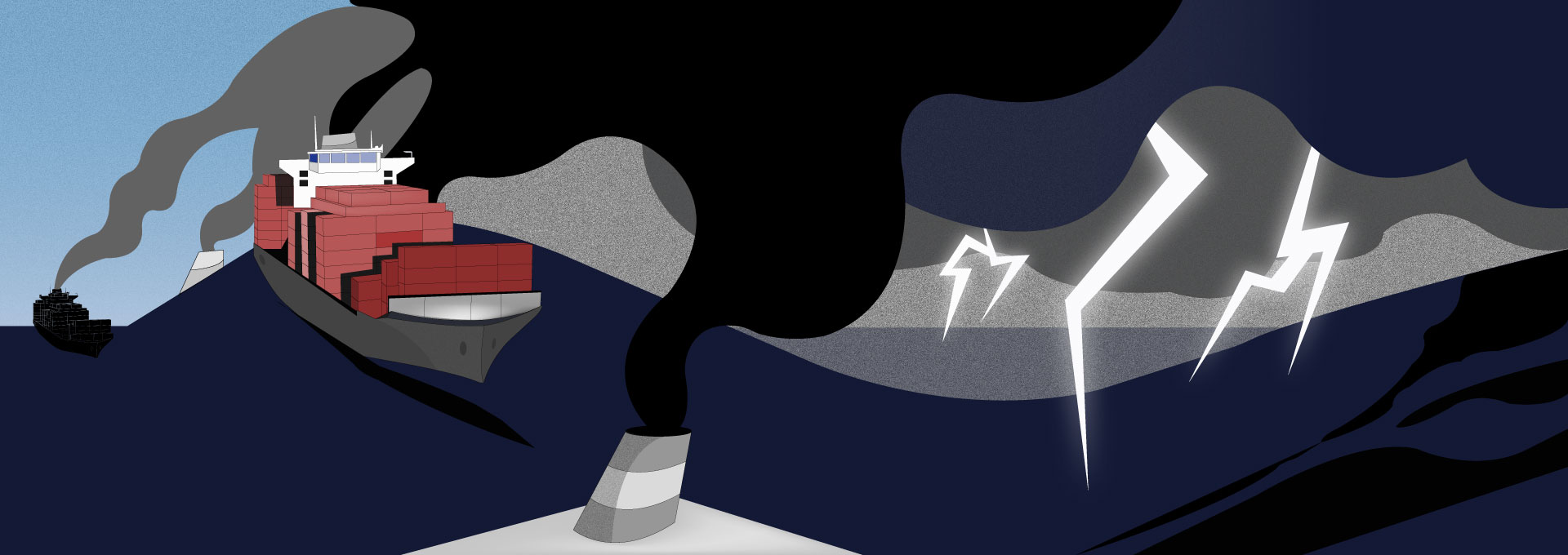They say lightning never strikes twice, but it appears to be striking a lot more often in some areas of ocean than others. New research published in Geophysical Research Letters has uncovered a surprising cause for the areas of high lightning activity: diesel emissions from cargo ships.
Lightning at Sea
A team of researchers from the University of Washington were intrigued by the recent increase of lightning storms at sea. They were doubly intrigued when it turned out that the increase was not spread out evenly but localized to particular zones, which experienced lightning storms at double the rate of surrounding areas. Cross-referencing the data with shipping lanes revealed that the areas in question, in the Indian Ocean and the South China Sea, were also frequently traveled by diesel-powered cargo ships.
“All we had to do,” lead researcher Joel Thornton claimed, “was make a map of where the lightning was enhanced and a map of where the ships are traveling and it was pretty obvious just from the co-location of both of those that the ships were somehow involved.” Once the correlation was clear, it was easy enough to figure out what was causing the lightning storms. Clouds are formed when water vapor attaches itself to particles floating in the air – in this case the particles from the diesel exhaust.
Scientists have made clouds deliberately in the past, through a process called “cloud seeding”. The difference is that the particles in diesel exhaust fumes are of a kind which especially encourages the formation not just of clouds, but of clouds very likely to produce lightning. And of course, unlike cloud seeding this is not being done deliberately, but completely by accident.
Climate Surprises?
We know that in the Anthropocene – the age of humanity – we have an increasingly powerful influence on our environment whether we like it or not. Discoveries like this one reveal to us the extent to which our impact on the globe may be unexpected and accidental. The human impact on our planet’s climate is a huge and complicated area of study. How many of the changes we are causing can we truly predict, and how many will simply come out of nowhere?
Cover art by Sheona Turnbull.

Share your thoughts and join the technology debate!
Be the first to comment